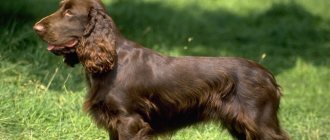The dog is not as active as before
As your pet ages, it becomes more difficult for him to endure long walks or climb hills. This is a normal part of the aging process, but it is still recommended to check with a veterinarian as there may be other reasons for the decline in activity. Arthritis or heart problems are common conditions in older dogs.
- What foods lower blood sugar
- 4 dangerous symptoms of perimenopause
- Polo T-shirt - how to choose a men's, women's or children's with descriptions of popular models and prices
Gum infections and dental problems
These are common problems for older dogs. Common signs include bad breath, plaque, swollen gums and loss of appetite. In addition to these unpleasant moments, serious infections in the teeth can enter the bloodstream.
Unlike age-related diseases, most dental and gum problems can be diagnosed by a veterinarian. Eliminating these unpleasant aspects improves the dog's well-being, allows him to eat more comfortably and prevents infection.
Along with teeth and gums, you may also notice that your dog's skin becomes less elastic as the amount of collagen available decreases.
Significant changes in weight
As activity decreases, some dogs begin to gain weight. Changing nutritional needs is also considered normal, but care must be taken to ensure that the dog does not gain too much weight, as this increases wear on the joints and provokes the development of arthritis. If sudden weight loss is a concern, you should contact your veterinarian to rule out problems with the thyroid gland or kidneys.
- How to treat an abscess on a finger near the nail
- Features of dismissal of pre-retirees
- What is the safest transport during an epidemic?
Breed and age of dogs
Of course, the main criterion that determines a dog’s lifespan remains its size, and, therefore, its breed. Small breed dogs live on average almost 5 years longer than such giants as mastiffs and great Danes. Accordingly, a lapdog at 12-14 years old will still be “young and pretty,” while a boxer or hound will already be old. The first signs of approaching old age in dogs appear already in “middle age”, which for large dogs is 5 years, for just large breeds - 7 years, for medium-sized breeds - 8-9 years, and for kids - 9-10 years. This period is especially dangerous because any serious illness can simply be overlooked, mistaking it for one of the symptoms of approaching old age. Health problems may include weight loss, poor appetite, increased thirst, frequent urination, difficulty breathing, chronic diarrhea or vomiting, foul odor from the mouth, or sore gums. Painful manifestations must be distinguished from signs of aging.
Proper nutrition and an active lifestyle in young and middle age can extend a dog’s life. In old age, she needs to adjust her diet to eliminate obesity associated with a slower metabolism.
The dog often looks confused
It is recommended to consult a veterinarian if you observe signs of dementia in aging dogs:
- aimless, confused walking around the house;
- lost look;
- ability to get stuck under furniture;
- gaze constantly directed to corners or walls;
- problems finding and using doors;
- walking in circles;
- meaningless sounds;
- timidity at the sight of familiar people.
Contact your veterinarian if you notice any of the above problems. The sooner you learn about what is a normal part of the aging process and what is a potentially dangerous disease, the sooner you can take the right step.
Joint pain and stiffness
Joint degradation is another common sign of an aging dog. Animals instinctively hide pain, so symptoms may not appear immediately. But as the joints worsen, you may notice that your dog becomes less mobile, especially in the morning or after a long walk.
Rare shot: Viktoria Isakova showed her grown-up daughter from Yuri Moroz (new photo)
A Brazilian travels 36 km by bike every day to take his loved one home.
Women's jeans: before you buy them, you need to pay attention to one detail
It is important to adjust your pet's schedule taking into account the changes occurring with it. Long and vigorous walks accelerate the degradation of joints, so it is better to replace them with several short walks. An orthopedic bed that evenly distributes the pet's weight while sleeping is also important as it helps reduce painful symptoms.
In addition to less vigorous exercise, there are joint health supplements that can improve your dog's quality of life. Supplements containing glucosamine and chondroitin provide advanced joint support for older pets.
When your dog is over ten years old
Contents hide
When your dog is over ten years old
The average lifespan of a dog is a relative concept. Something depends on the breed - some, especially small ones, are “officially” recognized as long-livers. But even within one breed, all sorts of incidents happen: some specific animals live longer, others die in the prime of life. On the other hand, veterinary medicine is now developing by leaps and bounds, and our current pets, who receive timely veterinary care, live an order of magnitude longer than their ancestors.
Nowadays, the average life expectancy of dogs in the world is 12 years. But, as you might guess, this figure is too vague, like the notorious “average temperature in the hospital.” However, even a fifteen-year-old pet can hardly surprise anyone now. There are many factors that influence your dog's longevity. Alas, it is simply impossible to foresee everything, to foresee everything. Our article contains general tips and recommendations for caring for dogs that have entered their golden and venerable years.
Brain aging. There is a common expression: “Over the years we fade.” The strength and capabilities of the body are no longer the same. Even the brain does not work as quickly and sharply as in its younger years. There is nothing to be done - age. And in the body of dogs, just like you and me, significant age-related changes occur. With one difference: they quickly become noticeable to our eyes. Dogs grow old and become decrepit literally in a matter of months. What does aging of an animal's brain lead to? That's right - to senile dementia (dementia). The dog begins to “get lost”, get confused in space, forget everything that he once knew, etc.
You will immediately notice all these alarm bells. Put aside philosophical arguments - they say, they have not yet invented drugs against old age. Yes, they didn’t invent it! But you are quite capable of supporting your pet and helping him prolong his best years. Take your animal to the veterinarian as soon as possible. In particular, diet correction and nutritional supplements in the diet help a lot.
The work of the senses. First of all, we mean deterioration of vision and hearing. And in this case, you will quickly suspect something is wrong! If your pet's eyesight has weakened, support him. At least don’t make drastic rearrangements of furniture in the apartment to make it easier for the dog to navigate.
Hearing loss is not as noticeable. And yet: you give a command, and a disciplined dog is in no hurry to comply. Don't boil, don't get excited! Perhaps your command was simply not heard.
Changes in behavior. A dog may approach the cherished age limit while suffering from a whole bunch of diseases. Your dog is noticeably having difficulty walking and is no longer as quick on his feet as before. Refuses offers to play. Became irritable and snaps. Dogs' character deteriorates for a reason! Get to the heart of the problem and support your pet in any way you can.
Joint stiffness, arthritis. Pay attention to warning signs: the dog has difficulty climbing or descending stairs, and ordinary walking is not easy for the animal. Let's not even talk about running! All this shows us signs of discomfort in the joints. Most likely, arthritis will not be completely cured. But the veterinarian will always tell you how to make your pet’s life as easy as possible. Do not neglect the recommendations of professionals!
What can you do yourself? Surround your dog with attention and care. Help him get in or out of the car. Use ramps whenever possible. If they are not there, in some cases, take the animal in your arms (again, when possible). Do not allow your pet to walk on wet or slippery floors.
Execution of commands and further training. We noted above that in some cases your dog may forget what it was previously trained to do. And yet, as practice shows, the “golden years” do not at all cancel out the further improvement of the dog’s skills and abilities. She can even continue to learn – at least simple tricks and commands. It will take a little more time to train, but you will stimulate your pet’s brain activity!
Your dog may forget some commands (especially those that are rarely used). We advise you to practice knowing the commands as often as possible. It is advisable to devote at least five to ten minutes to this issue during each walk.
Diet. It is very important to coordinate the diet, as well as any changes in diet, with the treating veterinarian. Older dogs require a special diet. It is advisable to use food designed specifically for this age category. Also, take into account contributing factors - for example, over time, animals' teeth weaken and become loose. You will need to make adjustments to your diet again!
Veterinary care. We emphasized the importance of regular veterinary care at the very beginning of the article. Once you reach the desired age, you will have to visit the doctor even more often - about once every six months. Don’t be lazy, be sure to go to the appointment, even when the dog is apparently absolutely healthy.
Regular blood and urine tests will help identify various diseases at an early stage. Axiom: the earlier a disease is detected, the easier it is to treat.
Ten years for a pet is not old age, dear friends! Your four-legged friend still knows a lot, can do a lot. He just needs a little help, right?
Photo: pixabay.com
Loss of senses
A dog's sense of smell, vision and hearing begin to deteriorate with age. Some animals may eventually go blind or become deaf.
The first signs of hearing or vision loss are often subtle. A dog may become more easily frightened (or even become aggressive) when someone approaches it because it is unable to see the person clearly. The animal also becomes less responsive to commands due to hearing loss. Both signs are often mistaken for “bad behavior” in the pet.
For this reason, it is important to make small changes to make your dog's daily life easier. Make sure your pet's water bowls, food, and bedding are always in the same place so they are easy to find. You should also avoid sudden movements, even if it's just petting, as they can frighten your pet.
It is worth noting that the lens of the eye does not necessarily mean that the dog is blind. This may be a condition called nuclear sclerosis; and it rarely affects vision.
If there is little snow, there will be no harvest: December 16 is Ivan the Silent Day
“We are still friends”: Derevianko commented on the breakup with his wife
It’s good to wash often: myths about shampoo and hair care that only harm











